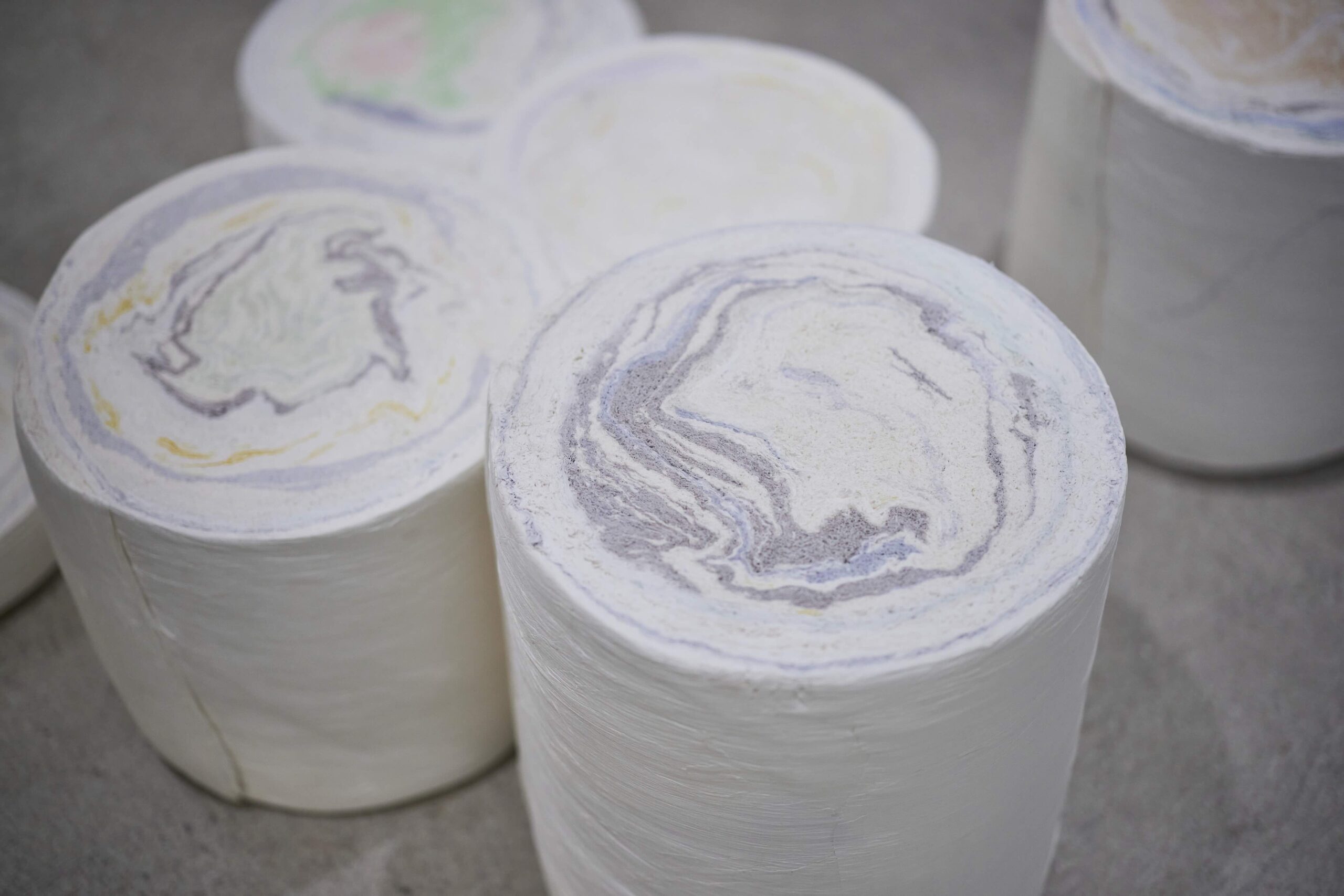Since ancient times, in Japanese culture, washi paper – whose life cycle begins and ends with the earth-has been an indispensable resource for everyday life. Understanding and working with this material, establishing a true dialogue with it, reflects the very nature of the ISSEY MIYAKE brand and is consistent with its commitment to integrating traditional Japanese craftsmanship into a way of dressing designed for the contemporary. The On Washi exhibition branches within the Tokyo and Osaka stores includes a special installation made from washi paper reminiscent of what was presented in Paris for the Spring Summer 2024 fashion show. Created with artist Yoshihisa Tanaka, it is accompanied by a documentary film and video interview with Tanaka and ISSEY MIYAKE head designer Satoshi Kondo. The washi paper used is the product of the brand’s continuous research and development together with artisans, engineers and manufacturers throughout Japan. The way it moves and transforms organically, responding to changes in its surroundings, recalls a vital element. This natural fluidity and playfulness are integral to ISSEY MIYAKE’s design and making. Washi has been used for more than 1,000 years as a fabric for clothing, particularly in northern Japan – its structure makes it much more durable than regular paper-Issey Miyake has been fascinated by it throughout his life, using its unique fibers in his collections, blended with polyester or cotton to create innovative new fabrics.

“I envisioned a washi paper installation in which the pieces would all convey these qualities to the fullest, and for that I did a lot of study trying to find their appropriate size relative to the scale of the place.”

In fact, Miyake’s historical fascination with washi is indicative of his broader pioneering approach: the marriage of tradition and modernity, craftsmanship and innovation, the ability to start with a simple square of paper and arrive at a bold new proposition of fabric, texture, or form. Washi paper is also traditionally used for origami, another historic Japanese art form that has fascinated Miyake and to which his intricate, sculptural clothes have often been compared. A piece of washi paper, once pleated and folded, can be easily carried around in a compact format, and can be easily hung by attaching a single stitch. Today, every collection that the Issey Miyake team composes is a reflection of what we have previously learned, as the founder’s philosophy and his approach to design and production are the foundation of the brand’s identity and the source of inspiration for this brand’s design research. A sense of joy and wonder, the basis of all research, seems to remain true and stable. The garments are designed for a sense of ease and lightness, thus giving playfulness, which is present in the design and making of a garment itself, and can also lead to wonder. It involves designing and making a garment that does not look like one, especially when it is laid out, and only the moment you pick it up and put it on do you realize that it is wearable. However, Miyake’s worldwide fame is due to his ability to combine fashion, technology and craftsmanship. First by inventing the technique that the dress had to be made from a single piece of fabric. Then by endlessly insisting on pleating and traditional Japanese folding techniques. The accordion pleats of his designs, however, could be washed in the washing machine without losing their shape and offered the ease of home wear. Thus, today, as in the best Japanese traditions, the factory used by Tanaka continues the ancient ritual of making washi paper by hand, although for this project he used a small machine to produce washi paper in rolls of hundreds of meters.
“I describe the reaction of clothing as something that speaks and responds to the movement of someone passing by, as well as to the resulting changes in the person’s airflow, sound wave, humidity and even emotions.”








